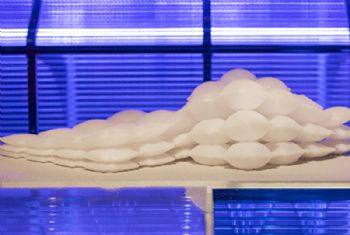
Working in collaboration, the BMW Design Department (Munich) and the MIT (Massachusetts Institute of Technology) Self-Assembly Laboratory have successfully developed printed inflatable material technologies that “self-transform, adapt and morph from one state to another”.
This technology was displayed for the first time during their exhibition
The Future Starts Here — held at the Victoria & Albert Museum in London.
BMW and MIT started their cross-disciplinary study two years ago, with the aim of “pushing the boundaries of material technologies”, with BMW in particular wanting to develop “concepts of future interiors that can interact and adapt seamlessly” (
www.bmwgroupdesignworks.com).
This collaboration resulted in the first example of a fully printed silicone inflatable that can be “customised to any size or shape” depending on the amount of air pressure in the system.
Indeed, the pneumatic controls in the system allow the printed structure to transform to offer a variety of shapes, functions or stiffness characteristics.
After testing ‘various directions’ on how a visionary interior could take shape, the Self-Assembly Lab achieved a breakthrough when it managed to liquid-print air- and water-tight inflatable geometries, like customised printable
balloons.
Skylar Tibbits, founder of the Self-Assembly Lab (
www.Selfassemblylab.mit.edu), said: “We brought together a number of recent technologies such as Rapid Liquid Printing and techniques from soft robotics to achieve this adaptive material structure.
“In the past, scenarios like these have often required error-prone and complex electro-mechanical devices or complex moulding/tooling to produce inflatables.
“Now, we’re able to print complex inflatable structures with custom actuation and tune-able stiffness.”